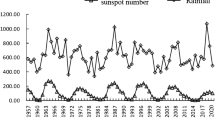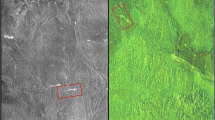Abstract
This article points out the multiple defect location algorithms on genetic algorithm. Normally, it means to first create a model for multiple defect locations through search systems or search software, then use genetic algorithms to search for the most suitable defect locations in the system, and then select the best fit after the relevant conditions are met. Finally, the software system and program are arranged in a certain order according to the algorithm of the related problem. Standardized Precipitation Evapotranspiration Index (SPEI) is used to evaluate drought conditions. In some areas where precipitation is rarely relatively arid, SPEI is disturbed by the eto algorithm, so its value is larger than that in non-arid areas. The situation of drought prevention and control in the plains of China is still very serious. This paper studies the flow conditions of 4 hydrological stations, chooses 6 common calculation methods to set step by step, records the water flow at different times, and analyzes the impact of water flow at different times on arid areas and related characteristics. In order to improve the physical condition, mental health, and physical activities of students on the university campus to a certain extent, each school has carried out relevant optimization training and formulated relevant policies and measures. Data processing is carried out through scientific software, and scientific sports research methods are used to conduct research to analyze and judge the assessment and evaluation conditions, so as to propose the arrangement and improvement methods of swimming training courses in sports schools.








Similar content being viewed by others
Change history
03 November 2021
This article has been retracted. Please see the Retraction Notice for more detail: https://doi.org/10.1007/s12517-021-08731-7
28 September 2021
An Editorial Expression of Concern to this paper has been published: https://doi.org/10.1007/s12517-021-08471-8
References
Anvari F, Edwards R, Starr A (2010) Methodology and theory evaluation of overall equipment effectiveness based on market. J Qual Maint Eng 16(3):256–270. https://doi.org/10.1108/13552511011072907
Arputharaj MEM (2015) Studies on availability and utilisation of mining equipment - an overview. International Journal of Advanced Research in Eng Technol 6(3):14–21
Atchison T, Morrison D (2011) In-pit crushing and conveying bench operations. In: Proceedings of the tenth Iron Ore Conference, July 2011. The Australasian Institute of Mining and Metallurgy, Perth, pp 123–131
Chadwick J (2010) New IPCC ideas. International Mining, pp 33–41
Dean M, Knights P, Kizil MS, Nehring M (2015) Selection and planning of fully mobile in-pit crusher and conveyor systems for deep open pit metalliferous applications. In: AusIMM 2015 3rd International Future Mining Conference, Sydney, NSW, Australia, 4-6 Nov 2015. AusIMM, VIC, Australia
Dzakpata I, Aminossadati SM, Kizil MS, Knights P, Nehring M (2016) Truck and shovel versus in-pit conveyor systems: a comparison of valuable operating time. In: Proceedings of the 16th Coal Operators’ Conference, University of Wollongong, 10-12 Feb, Australasian Institute of Mining and Metallurgy, pp 463–476
Elevli S, Elevli B (2010) Performance measurement of mining equipments by utilizing OEE. Acta Montan Slovaca 15(2):95–101
Ey (2014) Productivity in mining. Ey.Com, pp 1–8
Fourie H (2016) Improvement in the overall efficiency of mining equipment: a case study. J South Afr Inst Min Metall 116(3):275–281
Hay E, Nehing M, Knights P, Kizil MS (2019) Ultimate pit limit determination for semi mobile in-pit crushing and conveying system: a case study. Int J Min Reclam Environ 34:1–21. https://doi.org/10.1080/17480930.2019.1639006
Konak G, Onur AH, Karakus D (2007) Selection of the optimum in-pit crusher location for an aggregate producer. J South Afr Inst Min Metall 107(3):161–166
Londoño JG, Knights PF, Kizil MS (2013) Modelling of in-pit crusher conveyor alternatives. Trans Instit Min Metall Section A Min Technol 122(4):193–199. https://doi.org/10.1179/1743286313Y.0000000048
Lowrie RL (2009) SME mining reference handbook, vol XVI. Society for Mining, Metallurgy, and Exploration, Inc, p 448 ISBN 978-087335-297-0
Mohammadi M, Rai P, Gupta S (2015) Performance measurement of mining equipment. Int J Emerg Technol Adv Eng 5(7):240–248
Mohammadi M, Rai P, Gupta S (2017) Performance evaluation of bucket based excavating, loading and transport (BELT) equipment - an OEE approach. Arch Min Sci 62(1):105–120. https://doi.org/10.1515/amsc-2017-0008
Morriss P (2008) Key production drivers in in-pit crushing and conveying (IPCC) studies. South Afr Instit Min Metallurgy (Surface Mining) 2008:23–34
Nakajima S (1988) Introduction to TPM: total productive maintenance. Productivity Press, Inc., Cambridge, p 129
Norgate T, Haque N (2013) The greenhouse gas impact of IPCC and ore-sorting technologies. Miner Eng 42:13–21. https://doi.org/10.1016/j.mineng.2012.11.012
Pekol A (2019) Evaluation and risk analysis of open-pit mining operations. BHM Berg- und Hüttenmännische Monatshefte 164(6):232–236. https://doi.org/10.1007/s00501-019-0854-9
Pitkin GN (2014) Crushing and conveying - a new mining technique for the Hunter Valley. Aus IMM Bull 2014(5):782–798
Rahmanpour M, Osanloo M, Adibee N, AkbarpourShirazi M (2014) An approach to locate an in pit crusher in open pit mines. Int J Eng-Trans C 27:1475
Rajput HS, Jayaswal P (2012) A Total Productive maintenance (tpm) approach to improve overall equipment efficiency. Int J Mod Eng Res 2(6):4383–4386
Ritter R (2016) Contribution to the capacity determination of semi-mobile in-pit crushing and conveying systems. PhD thesis, the Faculty of Geosciences, Geoengineering and Mining of the Technische Universität Bergakademie Freiberg, pp 1–176
Sağlam B, Bettemir ÖH (2018) Estimation of duration of earthwork with backhoe excavator by Monte Carlo simulation. Journal of Construction Engineering. Manag Innov 1(2):85–94. https://doi.org/10.31462/jcemi.2018.01085094
Acknowledgements
The conclusive report, Experimental Study on Health Qigong Rehabilitation Prescription of Chronic Backache, supported by young talent support project from operating expenses for basic scientific research in Heilongjiang Province, has been published.
Author information
Authors and Affiliations
Corresponding author
Ethics declarations
Conflict of interest
The authors declare no competing interests.
Additional information
Responsible Editor: Sheldon Williamson
This article is part of the Topical Collection on Environment and Low Carbon Transportation
This article has been retracted. Please see the retraction notice for more detail: https://doi.org/10.1007/s12517-021-08731-7"
About this article
Cite this article
Xu, F., Zhao, B. RETRACTED ARTICLE: Prediction of drought in plain area and optimization of human exercise training based on genetic algorithm. Arab J Geosci 14, 1591 (2021). https://doi.org/10.1007/s12517-021-07959-7
Received:
Accepted:
Published:
DOI: https://doi.org/10.1007/s12517-021-07959-7




